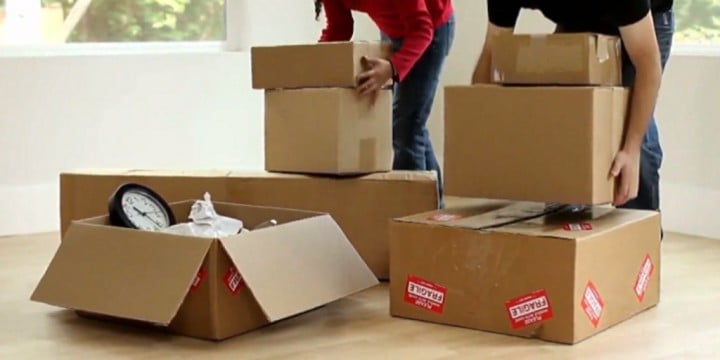Finding the Right Box
Wondering How Many Boxes Do you Need for your Next Move? Many moving companies base quotes on volume, because by knowing how much space your belongings will take determines what type of truck will be used for your move. Even if you’ll be doing the move yourself, having an idea of how much ¨volume¨ you have can also give you an idea of how big of a truck to rent.
Here are the sizes and volumes (cu.ft) to them. If you would like to know the cubic feet of your couch, simply measure height, length and depth in inches, convert them into feet, multiply all three, and it will give you the answer.
Moving boxes are essential for any move, but finding the right boxes can be a challenge. The first step is to determine what size boxes you need. Smaller boxes are perfect for light items like clothing and linens, while larger boxes can accommodate heavier items like books and appliances. Once you’ve determined the size of boxes you need, the next step is to find a reliable source. Your local hardware store or home improvement center is a great place to start.
You can also check online retailers or specialty moving supply stores. Once you’ve found a reputable source, be sure to stock up on boxes so you have plenty to choose from on moving day. With a little planning and preparation, finding the right moving boxes doesn’t have to be a headache.
There are a few places to buy moving boxes. One option is a local moving company. They usually have boxes of various sizes that they sell or rent out. Another option is a home improvement store, such as Home Depot or Lowe’s. They typically have boxes for sale in the customer service area. Finally, there are online retailers that specialize in selling boxes for moving. They often have a wide selection of boxes and other packing supplies. When choosing where to buy moving boxes, it’s important to compare prices and shipping costs to find the best deal.
(To see where you can buy the boxes you need click here)
Small Boxes (18″ x 12″ x 12″ = 1.5 cu. ft)
Small and mighty, these boxes are great for books, DVDs, video game consoles, cleaning supplies, magazines, tools, and nick-knacks.
Medium Boxes (18″ x 18″ x 16″ = 3.0 cu. ft)
This box ideal for books, photo albums and toys. Absolutely perfect for kitchenware and collectibles.
Large Boxes (18″ x 18″ x 24″ = 4.5 cu. ft)
These are the big boys, excellent for the lighter and awkward sized stuff like pillows, blankets, towels, larger dishes, and even lamps.
Dish Box (18″ x 18″ x 27″= 5 cu. ft)
Best used for china, glassware and other fragile items. Double-walled box.
Wardrobe Box (24″ x 21″ x 46″ = 13 cu. ft)
Perfectly made for packing your clothes since it has a bar at the top for hanging your clothes.
(Use the bottom for packing shoes, loose items such as belts, ties, etc…)
Here’s a handy Moving Box Chart to give you an idea of how many boxes more or less you’ll be needing before your big day. Remember, start packing early, don’t leave any packing until the last minute.

When it comes time to move, one of the most important things to do is estimate how many boxes you will need. This can help you avoid running out of boxes or having too many boxes.
A lot of people think that they need a lot more boxes than they actually do. In order to figure out how many boxes you will need for your move, there are a few things you should consider first. The first thing is the size of your old and new home. If both places are small, then fewer boxes would be needed because fewer items will have to be moved. A second factor is what type of items you have in each place- if most of the contents from both locations are heavy objects, then it’s safe to say that more boxes will be needed since those types of objects require extra care during the moving process. Keep these factors in mind when determining how many boxes you’ll need!
Tips on how many moving boxes to get:
-
Make a moving checklist of everything you plan to move. This includes furniture, appliances, clothes, etc.
-
Measure the size of each item and write it down.
-
Multiply the size of each item by the number of items you plan to move. This will give you the total cubic feet of space that your items will take up.
-
Convert cubic feet to boxes by dividing the total cubic feet by 30 (the average size of a box). This will give you the approximate number of boxes you will need.
If you are unsure about how many boxes to order, it is always better to overestimate than underestimate. You can always return unused boxes at the end of packing, but it is more difficult to stop and go get extra boxes if you run out.
When packing, be sure to pack heavier items on the bottom and lighter items on top. This will help keep your boxes from becoming too heavy. And remember to pack fragile items securely in boxes so they don’t get damaged during transport.
To Summarize:
There’s nothing worse than trying to move all your belongings into a new home, only to find that your boxes are the wrong size. If they’re too big, you’ll have a lot of wasted space – and if they’re too small, you’ll end up with items that don’t fit and are difficult to move. So how do you find the right moving box size?
The first thing to consider is the type of items you’ll be moving. If you have a lot of large, bulky items, you’ll need larger boxes. But if you’re mostly moving smaller items, you can get away with smaller boxes. The next thing to consider is the layout of your new home. If you have a lot of narrow hallways or tight staircases, you’ll need smaller boxes so they’re easy to maneuver. Finally, consider how much time you have to pack and move. If you’re short on time, larger boxes may be easier as they’ll allow you to pack more items in each trip.
By taking all these factors into consideration, you can find the right moving box size for your needs. This will make your move much easier – and less stressful! Consult a moving representative here.
Have Experience in the Moving Industry? Want an Additional Income Stream? Work With All Around Moving!
Earn extra profit as a moving consultant. Put your moving experience and drive to good use. Click here to learn more.






